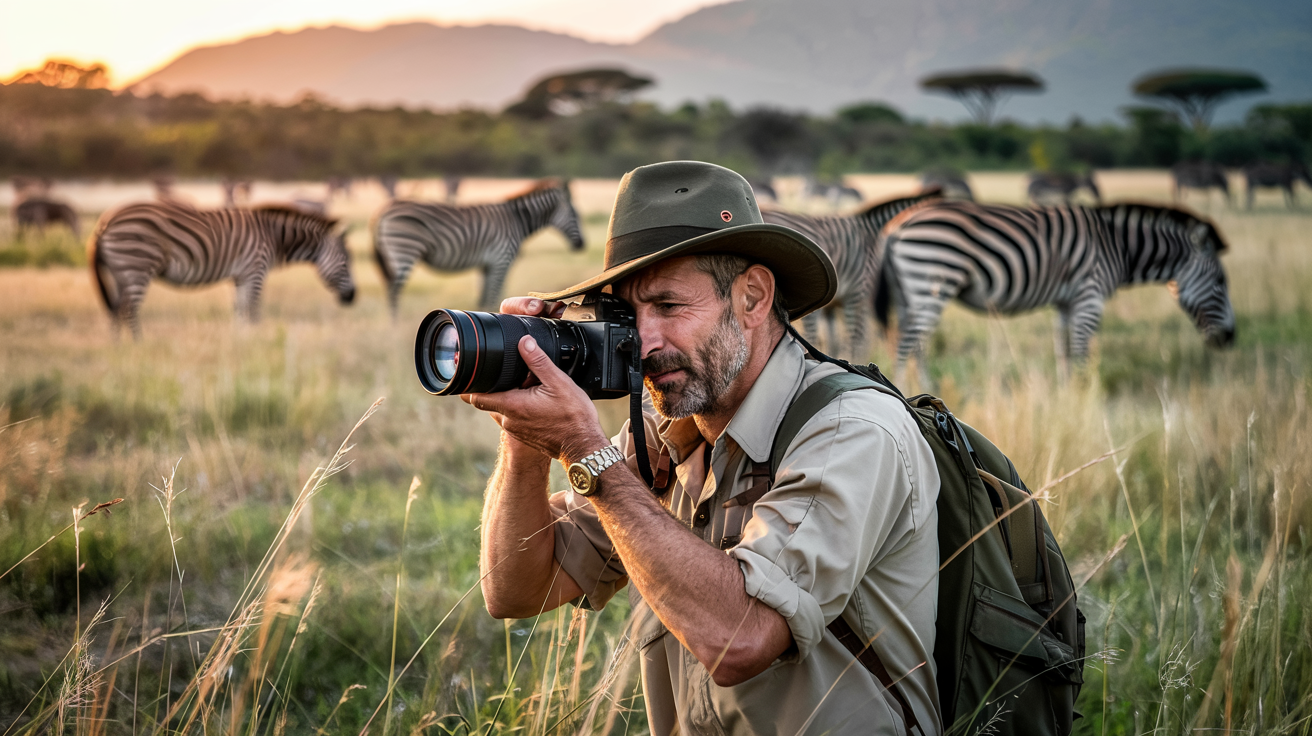Safari photography is an exciting adventure that will brush the adrenaline through your veins, but this will also become a playground for your practice in art. Across the planet, from the African golden savannas to the living jungles of India, some of the most spectacular places to capture wildlife in their natural habitat exist. From experienced photographers in search of our safari photography tips to keen travelers with a camera – these destinations will have you on the edge of your seat.
In this article, we shall look into 9 best safari photography locations, what each place is famous for, the wildlife available and best time to visit the places.
1. Mara Masai National Reserve, Kenya
The Masai Mara is among the best-known safari resting place in the world. Renowned for its rolling plains and high density of wildlife, it is most famous for the Great Migration, when over two million wildebeests, zebras, and gazelles cross the Mara River.
Why It Is Good for Photography:
- Scenes from the Great Migration in full action
- Larger felines; lions, leopards, and even cheetah
- Golden hour lighting that was absolutely stunning
Optimal Travel Period: From July to October
2. Tanzania: Serengeti National Park
A sprawling wildlife hotspot adjacent to the Masai Mara. It has its own migratory herds – the same great plains but with fewer tourists in parts, for more intimate encounters.
Photography Highlights:
- The endless savanna as the backdrop of your scenic pallette
- Large predator populations
- Silhouette of the famous Acacia trees
When to Go: June through October (dry season), or January through March to see the calving season
3. Kruger National Park, South Africa
Kruger National Park is often touted out as the ideal place for photographers owing to its variety of wildlife and wonderful infrastructure. This is one of the top places in Africa to see the Big Five-lion, leopard, elephant, rhino, and buffalo.
Why It Stands Out:
- Great road networks and self-drive options
- Sluggish leopards often seen
- From woodlands to rivers, a variety of habitats to explore
Best time to go: May to September (the dry season)
4. Okavango Delta, Botswana
This makes the Okavango Delta a UNESCO World Heritage Site that no safari should miss. The number of wildlife and birdlife that can be found around the delta, in its water channels, islands and lagoons is quite astonishing.
Key Photography Features:
- Helicopter safari aerial shots
- A Mokoro (dugout canoe) is also used for low angle wildlife photography.
- Brilliant bird photography especially in the wet season
Ideal Period to Travel: June to September
5. Chobe National Park, Botswana
Chobe is widely known for its large elephant population-one of the largest in Africa. The Chobe River is the natural border between the two countries and offers some great views for water-based photography.
Why It’s a Must-Visit:
- Beautiful photos of elephants along riverbanks
- Aquatic views: River cruises
- Big sky sunsets across the water
Ideal Season to Experience: May to Fall
6. Ranthambore National Park, India
How to Photograph the Bengal Tiger in Ranthambore, India If your aim is to capture the camera-shy Bengal tiger, then Ranthambore is one of the best places in the world to do so. A medley of historical relics and biological diversity, the park is situated in Rajasthan.
Photography Highlights:
- Tigers against ancient temples and forts
- Banyan trees and lakes comprise the unique jungle-scape.
- Good light conditions during morning safaris
Ideal Time to Explore: October to June
7. Etosha National Park, Namibia
Etosha is known for its gigantic salt pan, large enough to be seen from space. With its simple yet striking contours and waterholes that entices the various animals that share the park, Mungo is a great choice for dramatic, minimalist wildlife photography.
Why It’s Special:
- White pan and animals look like on great contrast
- Rhino sightings at waterholes
- Floodlit waterholes, crazy opportunities for night time photography
Optimal Period for a Visit: May to October
8. Pantanal, Brazil
World largest tropical wetland, and one of the best places for jaguar photography in the wild The nesters even have a place to stay in if they want to explore the area alone. Bird photographers will also find heaven here.
Photography Perks:
- Great opportunity to spot jaguars by the river
- More than 650 species of birds including the bright hyacinth macaw
- Boating wildlife viewing allows for the best perspectives
Ideal Season for Visit: July – October
9. Yellowstone, United States of America
Yellowstone is by no means a traditional “safari” destination but it offers some of the best wildlife photography in North America. The park features a diverse ecosystem with a variety of animals including grizzly bears and wolves roaming against the breathtaking geological formations.
Why It’s Worth It:
- Chances to photograph wildlife with geysers and hot springs
- Species such as bison, elk, wolves and bears that are iconic
- Stunning seasonal diversity: snow, meadows of wildflowers, fall foliage
Ideal Visit Times: Spring (April to June) and Fall (September to October)
Final Thoughts
Whether you are going into Central Africa or wetlands in South America, these places also provide excellent opportunities to practice your safari photography. Every location brings a new challenge and feel-from a lion at golden hour in the Masai Mara to jaguar with an intense stare in the Pantanal.
Make sure you do the following: Before you go;
- Give wildlife some room to roam.
- Take the right equipment (you will probably need a telephoto lens)
- Now wait, a well-timed shot often comes to those who wait.
These 9 best places for safari photography can promise not only impactful photographs with the right tools and the right state of mind but with the right preparations, a life-changing experience.
